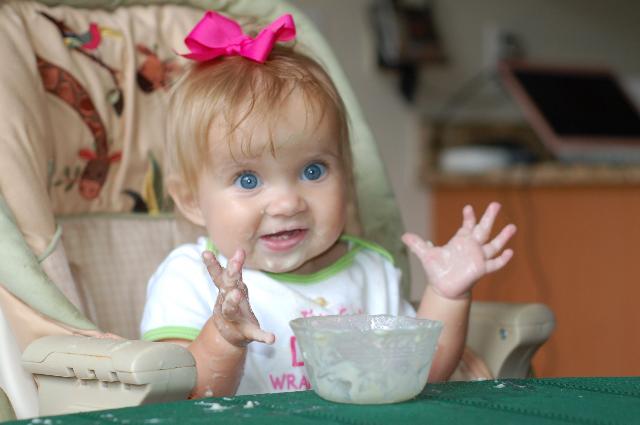I think the best practice for all of us, whether we have a child with food aversions or not, is to put ourselves in their little (or big) shoes. The Big Picture, always about the Big Picture. Our own anxieties and fears as parents feed directly into our children---how does this play out in a child with feeding complications? You want so badly for them to try a food, to eat a certain amount so they can reach a desired weight for their age, but sometimes ignore the fact that eating in itself is not enjoyable for them! Therefore the act of “trying a food” can be a really far-fetched idea in many instances. Not only that but there is often not one, but two or three people surrounding the dinner table coaxing the child to try the food and once again, our own anxieties set in and result in an overall stressful mealtime experience for everyone! There definitely needs to be a shift in the thinking here, and not only in the caregivers but also in many therapists treating children for pediatric feeding disorder (PFD), ARFID, or all related struggles related to mealtime and food.
Bear with me as I enter into story telling mode for a few minutes to share this example. When my daughter was a toddler we had family in town to celebrate her 3rd birthday. During their visit we went to a great little seafood place and had some delicious food! Keep in mind that this dinner wasn’t specifically our daughters "birthday celebration” night, but rather a night on the town for all of us, mostly adults, to try a new place. Her dad was really wishing for Adalyn to try the grilled shrimp but everything on her face said “No!”…thus the coaxing begins, “Just try it, you’ll love it” “Just one bite and then you can__(fill in the blank here)” Others joining in on occassion "yeah, you might like it!". We all know this scenario, right? I interuppted, half jokingly saying “Hello? Do you not know anything about what I do for a LIVING, treating very selective eaters? Please don’t worry about her not trying the shrimp, its fine". I said we’d just plan a seafood or shrimp night one night and approach something new with some preparation. Which is exactly what we did! We started talking about it the night before and mentioned it a few more times the next day, brought her along with me to the store and started calling out “Popcorn Shriiiimp, where are you?” having a little cheesy bit of fun. We even got some hush puppies since that is always a nice addition to any seafood! We came across some yummy looking breaded butterfly shrimp in the frozen food section and went that route instead of popcorn shrimp. I showed her the tails (on the picture on box) and asked if I could take them off for her, she thought that was the most generous act and thanked me in advance right there in the store “Oh, thank you mommy!”
That night we had a great meal of baked tilapia (this was already an accepted food of hers) with butter, lemon, mint from the garden and lots of parmesan cheese, a few new shrimp and some hush puppies! She immediately asked for her ranch—her favorite choice for dipping, especially with new foods, but I asked her if she would try some mango preserves for a sweet dip for our shrimp. She tried it, seemed to enjoy it, but politely declined any additional dips! Only 3 or so bites of the shrimp, but you know what? That’s ok! What a different reaction than the night in the restaurant! She was not prepared for trying shrimp, she shuddered at the thought and there was not much that was too familiar about it to her.
I do realize that different personality types make it easier or more of a challenge to come to grips with inconsistencies in life. Especially when dealing with the health and nutrition of our children. I am considered an “Idealist” (according to the Myers-Briggs personality test anyway), and I know my ability to really empathize with another person in combination with some other "weird" qualities help me to help others and I have a strange knack with the most rigid of "pickiness" and beyond with anxious eaters. It is a challenge but I do love it—at times I find it harder to relate these mealtime concepts and beliefs to the parents of these children, but I do believe a shift in attitudes toward mealtime is needed. This is why I am content with what ended up being a "1 bite shrimp night" and the fact that she may have eaten a third of what she did the day before. With the children we work with, as therapists, the details of caloric intake are much more important and have been taken into account following assessment and collaboration with the child’s physician and often a registered dietician. I am a big believer in finding calorie packed foods that can be added to current accepted foods, I learned this from the beginning of my career and it is a perfect way to continue to allow a child to choose what they will eat and how much they will eat…it just so happens that some of their choices have more calories in them! The outlook I have in many situations is the same, “This too shall pass”, or many small steps toward the bigger picture. And like I said, it’s all about the Bigger Picture.
** This was adapted from the original 2009 post on my feeding blog Fun with Food, but all very much remains applicable. Our not so little anymore Adalyn will now occasionally try shrimp but it is not and never will be her first choice!












